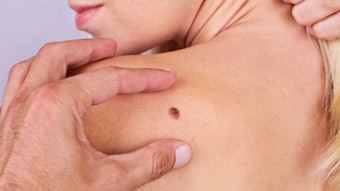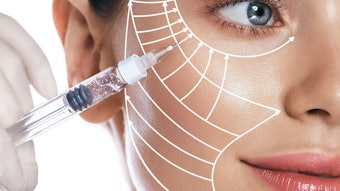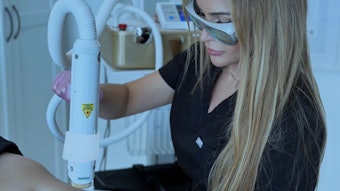
In a case study published in the American Journal of Cosmetic Surgery (June 10, 2021), Karen Soika, MD, shared her successful use of micro-botulinum toxin A injections to treat a patient who suffered deep dermal burns following two separate Intense Pulse Light and IPL/Nd:YAG treatments to treat rosacea and photodamage.
The 47-year-old man presented with intense pain and erythema, which had persisted for more than one year following treatment. “He had such bad erythema, and there really is only one thing that will cause erythema at that level still at a year out, and it’s neovascularization,” says Dr. Soika. “He didn’t have any evidence of scar tissue on top—the epidermis was not burnt. The patient was also complaining of pain.”
The patient initially had been prescribed oral doxycycline and IPL treatment for rosacea. He received the first IPL with fluences varying from 10 to 30 J/cm2, a pulse duration with a 20-30 ms delay, and two passes. That evening, he began to experience intense pain and erythema and stated that it felt like a sunburn.
At 30 days posttreatment, the erythema was still present. The treating doctor prescribed propranolol, which was ineffective. He then underwent a combined IPL/Nd:YAG treatment to eliminate the redness, which the physician believed was a form of persistent rosacea. The patient again experienced pain immediately after the procedure, which was worse than before.
When he came to Dr. Soika’s office 14 months later, he had severe bilateral erythema on the cheeks, dry and flaky skin on the forehead and an absence of notable oil secretions in the t-zone. He was extremely sensitive to contact and reported excruciating pain when touched in those areas. “The pain as well as the appearance of his skin were psychologically impacting him. He was very successful, and it just destroyed him,” she says.
She determined that his erythema was the result of dermal recruitment for neovasculogenesis, a known process in burn wound healing. “I worked with one of the companies that developed Myobloc (rimabotulinumtoxinB), so I theorized let me try it,” says Dr. Soika.
Based on previous research suggesting that a “micro” botulinum type-A technique is effective in inducing vasodilatory responses in erythematotelangiectatic rosacea as well as studies that have explored the use of BTX in pain, such as migraine, and for neurogenic pain in cutaneous tissues, she chose this micro-injection technique.
She reconstituted a 100-unit vial of BTX type-A with 8 mL of bacteriostatic normal saline. This solution was filled in 31-gauge 1-mL syringes, with each syringe containing approximately 12.5 units of botulinum toxin type-A, which allowed microinjections of approximately 0.5 unit per injection. The injections were applied to a depth of 3 mm and spaced 0.5 cm apart. She administered 70 microinjections per side of the face for a total of 140 injections. “He called me two days later with almost euphoric relief,” says Dr. Soika. “He said, ‘I haven’t felt like this in a year and two months.’”
Dr. Soika notes in her paper that BTX has been proposed to reduce pain by inhibiting the secretion of pain mediators such as substance P, glutamate and CGRP from the nerve endings and dorsal root ganglion, reducing local inflammation around the nerve endings, deactivating the sodium channel and exhibiting axonal transport.
It has also been proposed that BTX can relieve redness and flushing through the inhibition of acetylcholine release from the peripheral autonomic nerves of the cutaneous vasodilatory system along with blockade of substance P and CGRP, which contributes to the modulation of blood vessel dilatation. “And it works very quickly,” says Dr. Soika. “When you’re relaxing the muscles, it takes seven to 10 days to take effect. But when you look at the vasodilatory effect and inhibition of pain mediators, those kick in about two days after treatment.”
The patient underwent injections every two to three months for three years as his skin continued to heal. He is now fully healed and symptom-free. “That is how we advance medicine,” says Dr. Soika. “Normally we’re stealing from other specialties to make cosmetic medicine better; and now here I was using a cosmetic product medically to help the patient. And this treatment is very easy to do.”
Inga Hansen is the managing editor of MedEsthetics.











